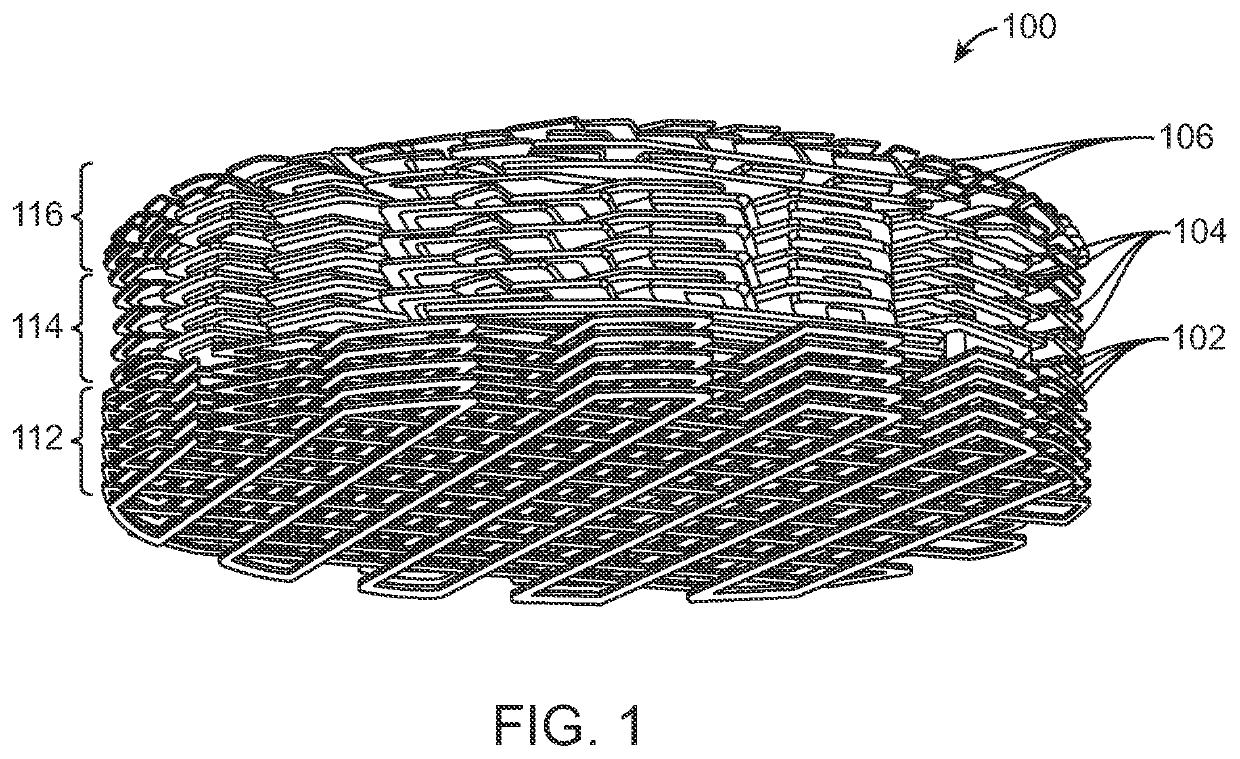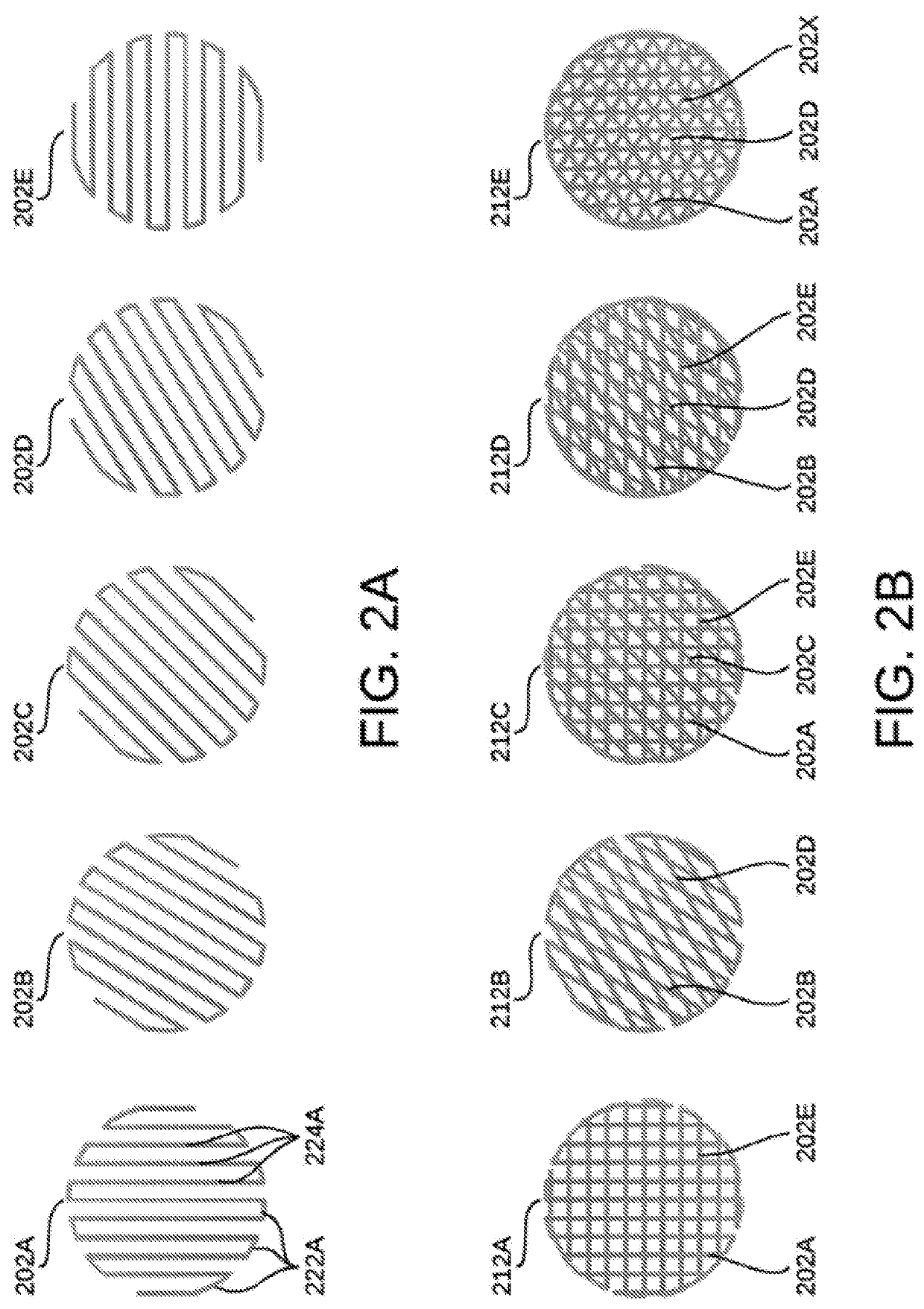Implantable scaffolds and uses thereof
a technology of implants and scaffolds, applied in the field of implants, can solve the problems of difficult treatment, large size of tissue defects, and inability to heal naturally
- Summary
- Abstract
- Description
- Claims
- Application Information
AI Technical Summary
Benefits of technology
Problems solved by technology
Method used
Image
Examples
example 1
[0184]Reference is now made to FIG. 8, which depicts a non-limiting example of a procedure 800 for implanting a tissue engineering scaffold arthroscopically into an osteochondral defect according to one or more aspects of the present disclosure.
[0185]At step 802, an arthroscopic entry may be made into the tissue defect area. In some instances, the tissue defect area may comprise a bone and / or cartilage defect to the knee. In other instances, the defect area may be a defect to any osteochondral interface in the body.
[0186]At step 804, the defect area may be cleaned and prepped for application of surgical techniques, as well as a tissue scaffold as described herein. Specifically, in the event that the tissue defect includes damage to cartilage at the site of arthroscopic entry, the cartilage area in and around the defect area may be cleaned, thereby exposing the underlying bone surface.
[0187]At step 806, a microfracture surgical technique may be applied to the defect ...
example 2
and Mechanical Studies
[0195]In vitro studies were carried out to characterize the response of mesenchymal stem cells (e.g., MSCs) in relation to a 3D printed nanoporous thermoplastic polyurethane (e.g., nTPU) tissue engineering scaffold. Previous studies in vitro and in vivo suggested that the 3D printed nanoporous nTPU scaffold was osteogenic and promoted vascularization, both of which are required for healthy attachment to bone in a clinical setting. Thus, additional in vitro testing focused on confirming and expanding on this observed effect on an implant designed to replace lost or damaged cartilage on the articulating surface of the knee. In preparation for further in vitro testing, 3D porous bi-phasic disks were designed, 3D printed, sterilized, and subsequently evaluated via MSC cell study, assays, confocal imaging, and quantitative analysis. Additionally, mechanical testing studies were performed, including both compression and fatigue tests, and SEM images of the fatigued s...
example 3
ring Analysis
[0201]During manufacturing analysis, the printability of nTPU was assessed across a two-phase approach. In the first phase, the first step was to perform small scale lab tests which were followed by an assessment and decision to go forward to phase two with actual print tests.
[0202]By choosing specific test artifacts, the various barriers between a new material and processability via various rapid prototyping methods were assessed. Three different categories of artifacts or parts were produced: parameter setting, part / design properties, and actual geometries.
[0203]The manufacturing feasibility conducted during manufacturing analysis had several objectives. First, to evaluate the printability of nTPU across various rapid prototyping methods. For example, in regard to the rapid prototyping method of selective laser sintering (e.g., SLS), small scale labs tests that the material had to clear were SSC analysis to determine a thermal printing window, TGA analysis to show mat...
PUM
| Property | Measurement | Unit |
|---|---|---|
| size | aaaaa | aaaaa |
| size | aaaaa | aaaaa |
| size | aaaaa | aaaaa |
Abstract
Description
Claims
Application Information
 Login to View More
Login to View More - R&D
- Intellectual Property
- Life Sciences
- Materials
- Tech Scout
- Unparalleled Data Quality
- Higher Quality Content
- 60% Fewer Hallucinations
Browse by: Latest US Patents, China's latest patents, Technical Efficacy Thesaurus, Application Domain, Technology Topic, Popular Technical Reports.
© 2025 PatSnap. All rights reserved.Legal|Privacy policy|Modern Slavery Act Transparency Statement|Sitemap|About US| Contact US: help@patsnap.com



